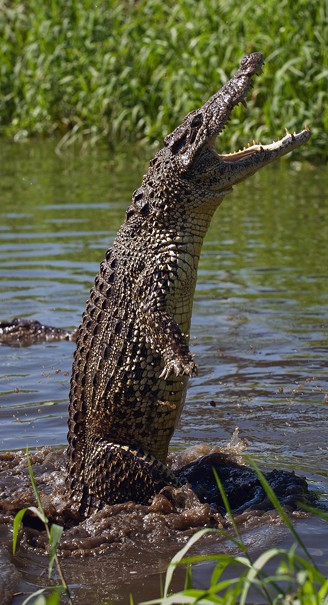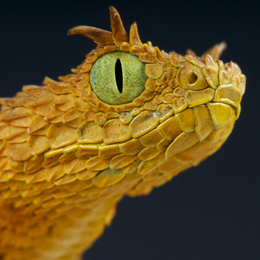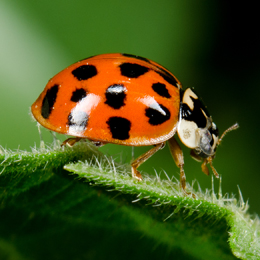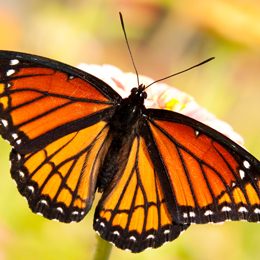Physical Description
A Cuban crocodile generally grows to an approximate length of 2.7 - 3 meters (9 - 10 ft) where a male crocodile is slightly larger than its female counterpart. The observed weight of the species is generally 70 - 80 kg (150 - 180 lbs) depending upon its daily nutrition. There have been studies reporting a Cuban crocodile reaching a maximum length of 3.5 meters (11 ft) and weighing 215 kg (474 lbs).
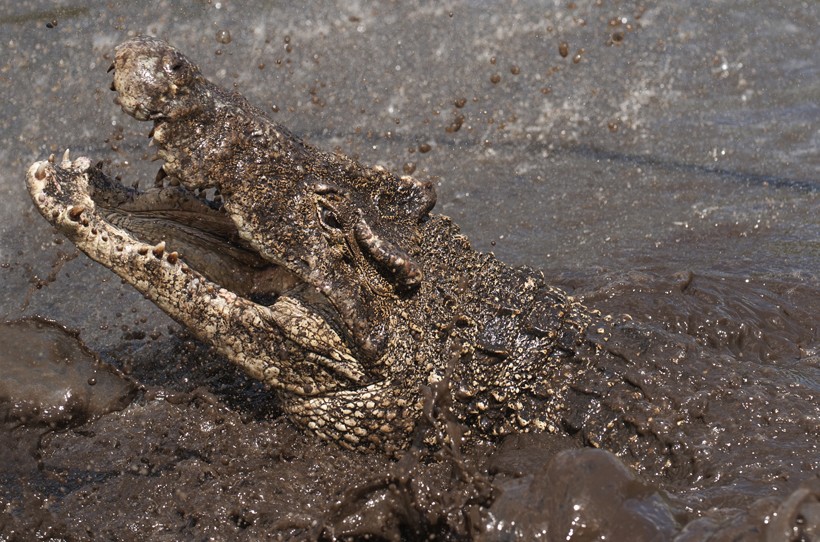
Cuban crocodiles grows to a length of 2.7 - 3 meters and weigh around 70 - 80 kg
?
Image credits: Sergey Uryadnikov/Shutterstock
The Cuban crocodile is, like all reptiles, an ectothermic (cold-blooded) species that has to adjust its body temperature by using heat, acquired from an external environment. The lifespan of the Cuban crocodile is a sensitive issue and has never been thoroughly established. However, some scientists suggest that they live as long as 75 years. Despite the evidence many zoologists still state that this endangered species cannot live for more than 12 – 20 years unless bred in captivity. Hence, a consensus is yet to be reached determining the actual lifespan of the Cuban crocodile.
Habitat
The Cuban crocodile is a rare species that prefers a freshwater habitat. It is mainly found in freshwater regions such as swamps or marshes and rivers. The Cuban crocodile is an incredibly terrestrial creature that rarely swims inside the water. Hence, the crocodile can often be found crawling near a river bank rather than inside it.
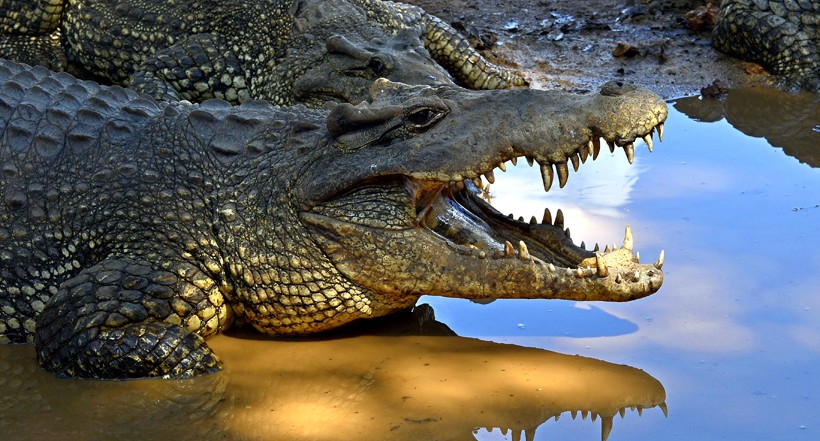
Cuban crocodile natural park, Cuba
?
Image credits: Sergey Uryadnikov/Shutterstock
The crocodile generally inhabits areas consisting of dense shrubs, natural lagoons and freshwater mangroves. They particularly favor sawgrass swamps and deep lakes, a habitat that is mostly bordered by a flat terrain or water pockets along rocky edges.
Geographical Distribution
The Cuban crocodile can only be found only on Cuba in a few selected areas. The Zapata Swamp located in the northwest region of Havana is a known habitat that preserves a minor population of the Cuban crocodile. The population here is restricted to a small area of approximately 360 square kilometers on the southwest part of the Zapata Peninsula, which is also home to the American crocodile (Crocodylus acutus). Another endemic area where the species population is abundant is the Lanier Swamp on the Isle de Juventud. These areas are often termed as the ‘Everglades’ of the Floridian coast, providing a freshwater ecosystem for the species.
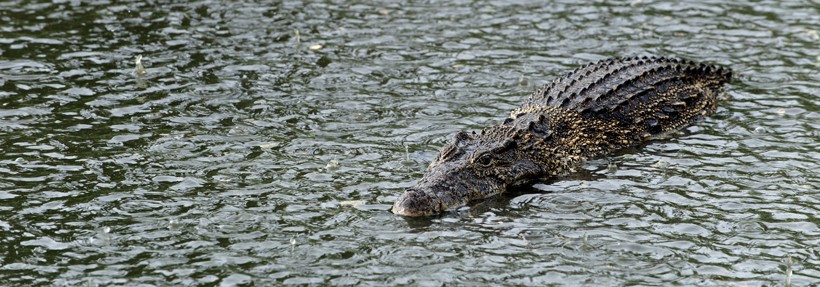
The crocodile has a restricted distribution due to severe activities like illegal pet trade and habitat destruction
?
Image credits: Sergey Uryadnikov/Shutterstock
Fossils of various Cuban crocodiles have also been discovered in the Bahamas and different parts of the Cayman Islands. The geographical distribution of the Cuban crocodile suggests that it has the smallest habitat range possible and hence, activities causing the destruction of their natural habitats and population must be controlled or, even better, stopped.
Anatomy
The Cuban crocodile differs from other crocodiles by featuring armored scales, a brightly colored body and long, strong legs. It is a medium sized crocodile that consists of ‘pebble’ like scales that blend within a vibrant pattern of black and yellow speckles spread over its body. This species shows sexual dimorphism where adult males are larger as compared to female Cuban crocodiles. The body of a juvenile Cuban crocodile has lighter shades of yellow spots as compared to an adult one that showcases a body with a dark yellow coloration and blotched spots.
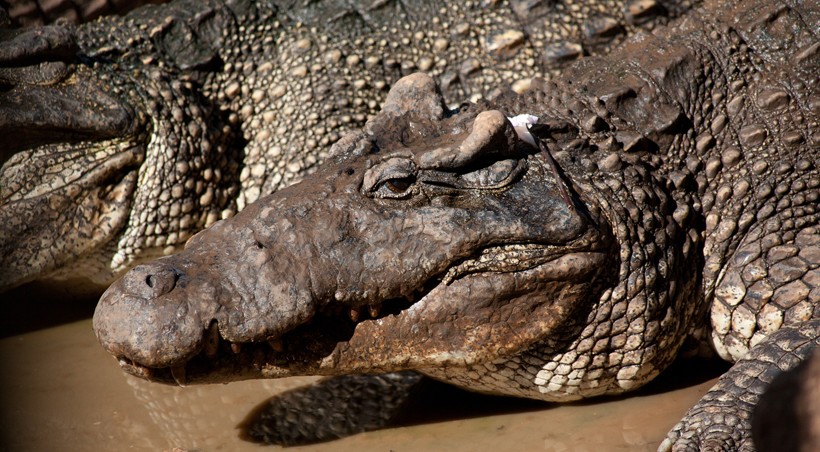
The bony ridge behind the eyes are clearly visible.
?
Image credits: Karla Wilson/Shutterstock
The Cuban crocodile has a short, broad head that consists of a bony ridge right behind the eyes. The species shows a dark coloration that is more persistent on the dorsal side. It consists of a pale white belly that has no distinctive markings. Similar to other crocodiles, the Cuban crocodile also has a four-chambered heart and showcases bilateral symmetry.
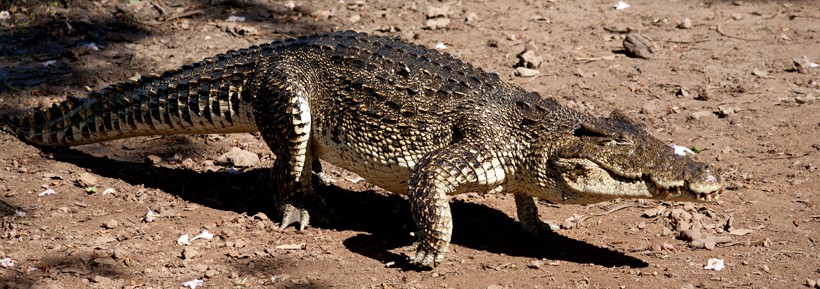
The Cuban crocodile is known for its ‘high walk’
?
Image credits: Karla Wilson/Shutterstock
The scales of a Cuban crocodile begin from the dorsal section and extends till the back of the neck. The scales are unusually large on the legs and heavily keeled near the rear legs. The species has a middle sized snout and nasal prominences that enable it to detect scents in the air. They are also believed to have a total of 66-68 teeth, adapted specifically for crushing turtle shells. A unique characteristic of the Cuban crocodile is its white gleaming eyes. They have feet with reduced webbing that enables them to walk on land with increased strength and agility. Their strong tail which is marked with black bands helps in swimming and jumping.
Diet
Cuban crocodiles mainly feed on aquatic invertebrates and small terrestrial mammals. The typical diet of a Cuban Crocodile varies because both adult and juvenile crocodiles hunt different kinds of prey. Juvenile Cuban crocodiles thrive on arthropods, gastropods like apple snails and small fish while the adults prefer freshwater turtles, fish and other small mammals.
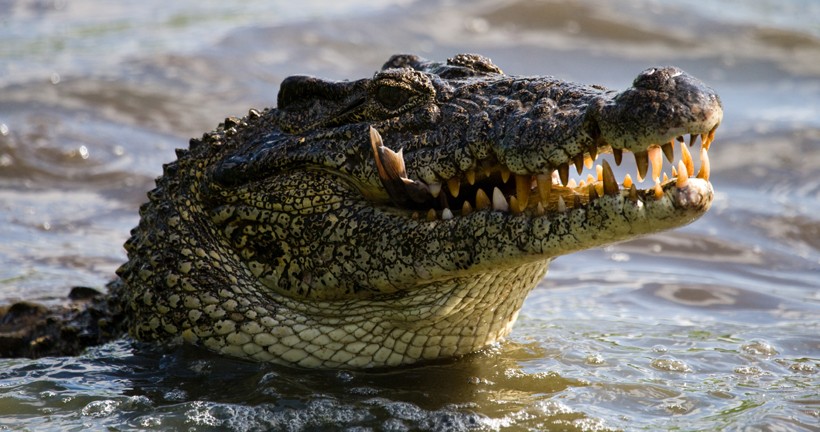
Cuban crocodile eating fish
?
Image credits: GUDKOV ANDREY/Shutterstock
Cuban crocodiles also feed on freshwater crustaceans like crabs, and feral pigs and birds. An interesting study regarding the fossils of various extinct species suggests that the Cuban crocodile once preyed on giant ground sloths that are now extinct.
Prey
The Cuban crocodile is an endangered New World species that is a deadly predator in the wild. An adult particularly feeds on fish, birds and small terrestrial mammals. The species also possess blunt rear teeth, a special characteristic that helps them break hard tortoise shells. Besides this, the Cuban crocodile also has strong feet that help with jumping and catching prey, much like the American alligator.
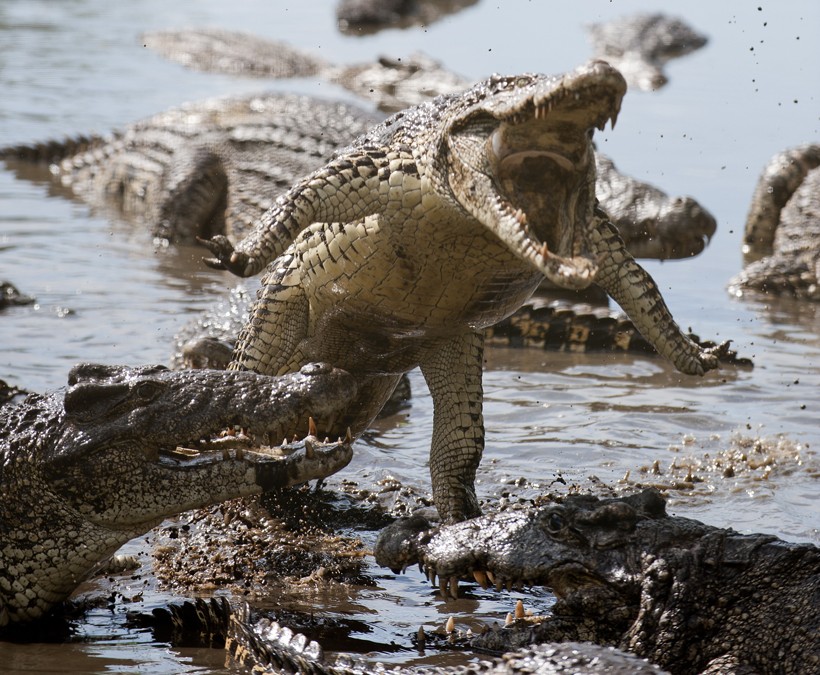
The Cuban crocodile have strong feet that helps with jumping and catching prey
?
Image credits: Sergey Uryadnikov/Shutterstock
Apart from having sharp teeth and a strong foothold, the Cuban crocodile uses its tail to knock out a prey or a predator in the wild with a devastating blow. The tail also provides a steady balance when the crocodile leaps and snatches its prey from large branches. Sometimes Cuban crocodiles use their tails to hit the trunks of large trees that causes many small animals, birds or their eggs to fall out making it easier for them to consume their prey.
Predator
Cuban crocodiles don’t really have predators in the wild besides poachers and illegal traders in the wild. This species is rarely attacked since it is an incredibly territorial reptile that lunges forward aggressively if it feels threatened. Cuban crocodiles bred in captivity are relatively more docile as compared to the kinds found in the wild.
Reproductive Cycle
Cuban crocodiles mate in the months of May till July during which environmental conditions are appropriate and favorable for nesting. Evidence of interbreeding between distinct species of crocodile has been recorded also. The Cuban crocodile is said to interbreed with American alligators and Siamese crocodiles. This species is a mound-nesting species although research suggests that they can also lay eggs in abandoned holes. A Cuban crocodile female prefers to nest in wet marshes to form a trench and camouflage the eggs by covering it with organic matter. The breeding season can last for three to four months while the real incubation period is in between 60-70 days. The quantity of eggs produced depends completely upon the age of the mother. Studies suggest that as many as 60 eggs can be laid by a female Cuban crocodile after mating. However, it has been observed that older females yield an average number of 40 – 50 eggs.
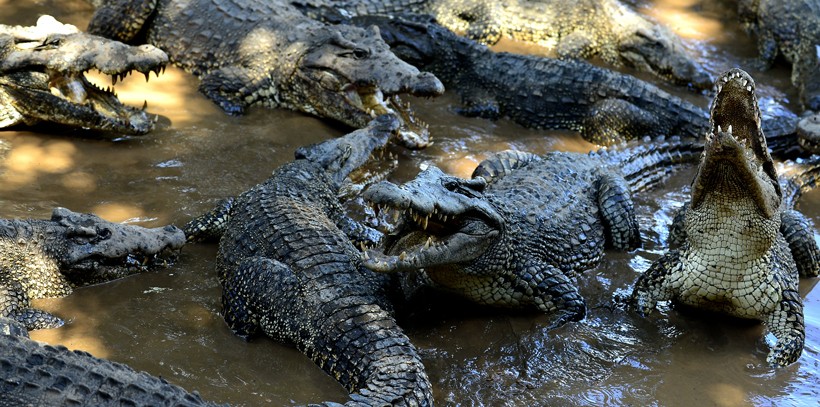
Large Cuban crocodile group, natural park Cuba
?
Image credits: Sergey Uryadnikov/Shutterstock
The mentioned number of eggs is thought to be produced to compensate for those that do not survive hatching. The eggs become an easy prey for other mammals, reptiles and birds. According to research Cuban crocodiles often feed on the eggs, a study that suggests cannibalistic traits with the species. The hatching period generally takes place in the months of August till early September. The Cuban crocodiles either nest in holes or create mounds that are made of peat. During birth, the eggs are approximately 5 – 7.6 cm in length with an average weight of 112 grams. The gender of the egg completely depends upon the temperature of the nest that is regulated through incubation. If the temperature is in the range of 30 – 32 degree Celsius, a male crocodile is born but if the temperature was below than 30, or higher than 32 degree Celsius a female is born.
Behavior
The Cuban crocodile displays behavioral characteristics that make it a very intelligent species. The fact that the Cuban crocodile is more vicious and lethal is due to the presence of a well coordinated cerebral cortex. This tissue is responsible for linking intelligence, memory and awareness. Few Cuban crocodiles that were being bred in captivity in Gatorland, Florida also exhibited a pack-hunting behavior.
Studies reveal that when the crocodiles hunt in the wild, they tend to surround and attack a large prey, maiming it and thus making it defenseless. However after a hunt, they tend to remain solitary and can often be found basking near riverbeds.
Threats & Conservation Status
The Cuban crocodile faces severe threats. Especially habitat loss is the reason why its distribution has been majorly limited to the Zapata Swamp, an expanse that measures 657,900 hectares, south of the Matanzas Province in western Cuba. Luckily most of this area has been given the status of a wildlife refuge and a protected area of managed resources. The Cuban crocodile is a critically endangered species because of two major threats – illegal hunting and hybridization with Native American crocodiles. Hunting adult and juvenile Cuban crocodiles for the pet trade market and also for its meat has been a consistent threat for the population since the 1990s. Crocodile meat is sold for local consumption and to private restaurants. Another threat is the further loss of habitat by human activity. Despite being a critically endangered species under the IUCN, the Cuban Crocodile is still being sold by dealers without an authorized permit.
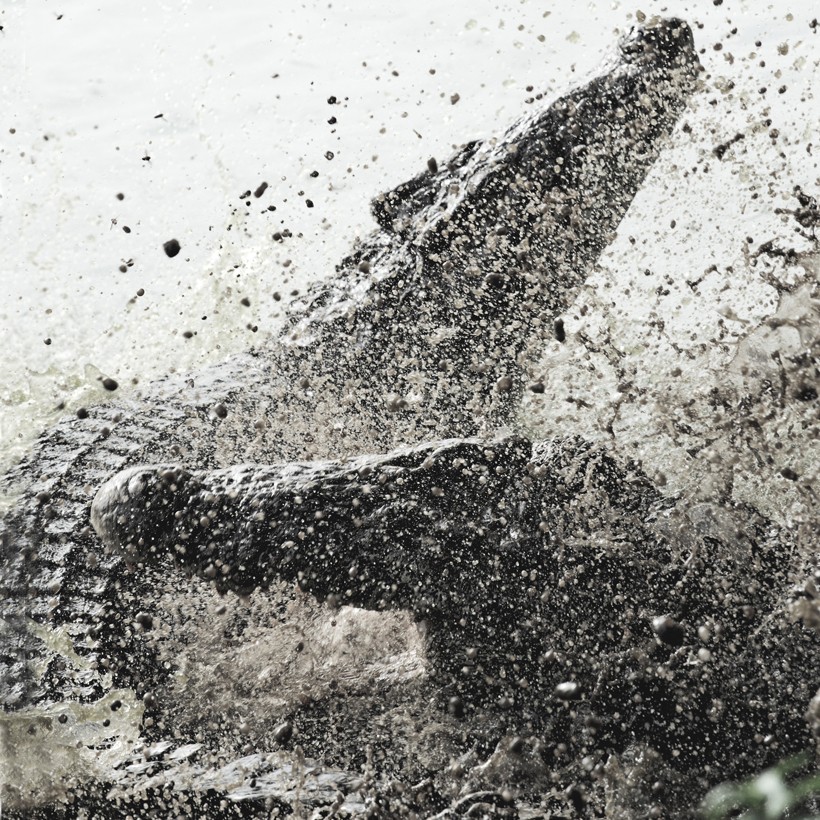
Cuban crocodiles fighting
?
Image credits: Sergey Uryadnikov/Shutterstock
Hybridization is also a major issue that hasn’t been resolved and hence disrupting the Cuban crocodile’s pure gene pool. A team of Cuban and Canadian researchers came across a bizarre phenomenon in the wild – the Cuban crocodiles were found interbreeding with their distinct cousins, the American crocodiles creating a new generation of hybrid species that posed a major threat to their survival. The hybrids born were found competing against pure Cuban crocodiles for both habitat and feeding grounds. Therefore, Cuban crocodiles today are being bred in captivity to ensure their gene pool doesn’t collapse. Breeding programs have been initiated in crocodile farms and zoo’s like the Zapata Swamp Captive Breeding program and the National Zoo program in the US to preserve the gene pool of the species.
Funfacts
- Cuban crocodiles are the most critically endangered species within the crocodilian family.
- Cuban crocodiles tend to use their tails that are marked with darkened bands as a form of distraction before leaping towards a prey.
- This species is the most terrestrial of its kind and prefers freshwater over saltwater.
- The age of a Cuban crocodile can be determined by the dark coloration of its iris or by studying a sample that contains a part of its scales.
- The Cuban crocodile’s scientific name is a direct reference to its rhomb-shaped speckled scales.
- The Cuban crocodile is known for its ‘high walk’ since its hind feet possess reduced webbing making it easier to walk on land.
- Cuban crocodiles show a hierarchy of social dominance that is based on gender, size and temperament.
